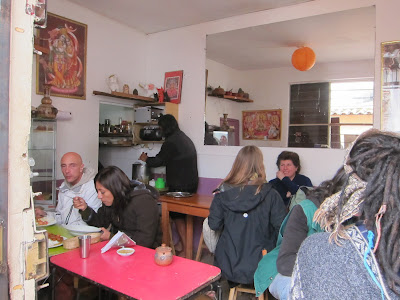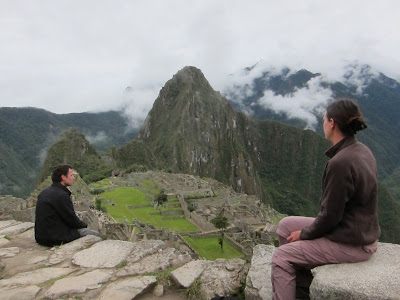We arrived in La Paz, the capital of Bolivia, during the afternoon of the 24th of December. We had organized to meet there with our dear friend Pedro.
For Christmas' Eve we went to a popular restaurant which looked like a French brasserie. And the boys ate a picana (soup made with boiled beef, pork and chicken meats and vegetables) to respect the Bolivian Christmas tradition!
For Christmas' Eve we went to a popular restaurant which looked like a French brasserie. And the boys ate a picana (soup made with boiled beef, pork and chicken meats and vegetables) to respect the Bolivian Christmas tradition!
Pedro and Luis at Christmas' Eve
The Picana
Café Ciudad
During the next couple of days we decided to take our Christmas break and rest, preparing the next weeks of travel and watching a few regressive movies on our laptop. As a consequence we did not visit La Paz that much but we wandered a lot in its street full of people at every hour, days and nights. A varied crowd in which we specially noticed groups of women with children, begging for money or trying to sell candy bars or pack of tissues. We could also observed that charity is present and well organized in the city during this Christmas period.
In brief La Paz, the highest capital in the world, is not an unpleasant city but lacks of interest for tourists.
Pictures with Santa on Plaza Murillo
******
On the shore of Lake Titicaca we spent a few days in the Bolivian Copacabana, a village where departs the daily excursion to the Isla del Sol. Well we paid the day trip only 7$ so we should not have expected much. We took a crappy boat with water leaks for two hours to the northern part of the island.
THE boat
Happily we hiked for a few sunny hours to some Inca ruins. Very enjoyable!



To recover from our emotions we found a little restaurant which, surprizingly enough, served a delightful cheese fondue that we savored in ecstasy! :))

















































